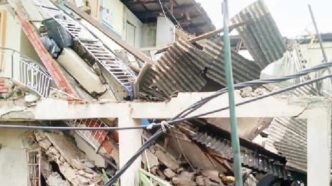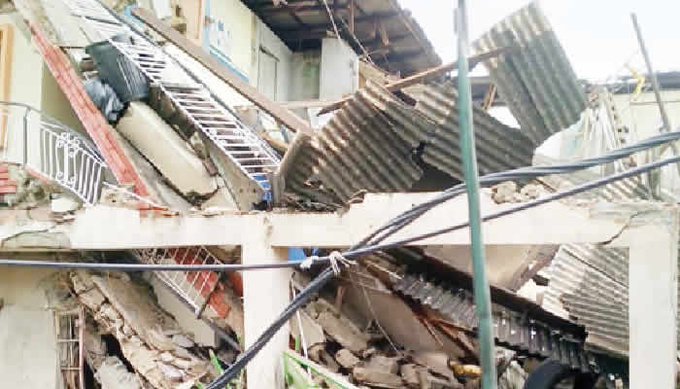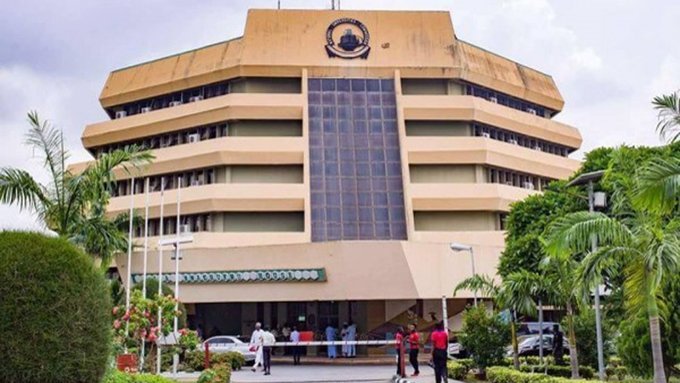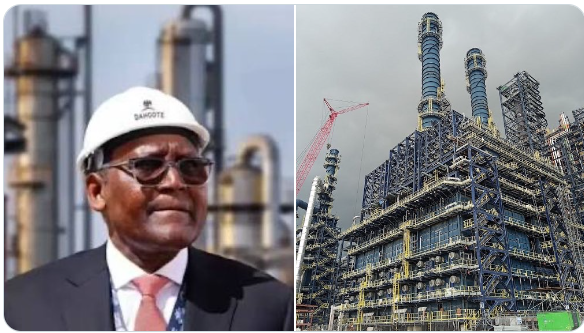Tragedy Strikes as Residents Trapped Under Rubble, Rescue Operations Underway
Lagos, Nigeria — Tragedy struck in the early hours of Thursday as a two-storey building collapsed in the Mangoro area of Lagos State, sending shockwaves across the community and raising fresh concerns about building safety in Nigeria’s commercial capital. The collapse, which occurred without prior warning, left residents scrambling for safety, while emergency responders rushed to the scene to rescue those trapped under the debris.
The incident has once again brought to the fore the recurring issue of structural integrity, poor building regulation enforcement, and the rising cases of collapses in Lagos, a state that continues to witness rapid urban expansion and housing demand pressures.
Eyewitness Accounts: Panic and Chaos
Eyewitnesses described the terrifying moment when the building gave way. Residents nearby said they heard a thunderous sound just before dawn, followed by clouds of dust and desperate screams for help.
“I was inside my shop across the street when I heard a loud bang,” said one eyewitness who gave her name as Amaka. “People came out running. When the dust cleared, we realized the two-storey building had completely caved in. Some people were trapped inside, including children.”
Another resident, a motorcyclist who plies the Mangoro route, said the collapse caused traffic disruption as crowds gathered, with many rushing in to help before emergency teams arrived.
Emergency Response: LASEMA, Fire Service, and Police on Ground
The Lagos State Emergency Management Agency (LASEMA), Lagos State Fire and Rescue Service, and police officers were immediately deployed to the site. Heavy-duty rescue equipment, including excavators and emergency medical units, were brought in as responders searched through the rubble for survivors.
A spokesperson for LASEMA confirmed that multiple people had been rescued and taken to nearby hospitals, but fears remain that more individuals could still be trapped. “We are working tirelessly with other first responders to ensure that every life is accounted for. Our priority is to rescue survivors and provide immediate medical attention,” the spokesperson said.
Medical personnel from the Lagos State Ambulance Services (LASAMBUS) were also on ground to administer first aid to victims suffering from shock, cuts, and fractures. Security personnel cordoned off the area to prevent overcrowding and ensure smooth rescue operations.
Casualties and Survivors
While official figures are still being compiled, residents in the neighborhood suggested that the building housed several families, raising concerns that the casualty count could rise. Reports indicate that some individuals were pulled out alive, but a number of others sustained critical injuries.
An emergency worker on the scene, who spoke under condition of anonymity, hinted that the building had shown signs of distress in recent weeks, with visible cracks on the walls and complaints by tenants about its weak structure.
Building Collapse: A Recurring Menace in Lagos
This latest tragedy adds to the growing list of building collapses in Lagos, a state often regarded as the economic hub of Nigeria but one that struggles with urban planning challenges.
According to data from the Building Collapse Prevention Guild (BCPG), Nigeria records dozens of building collapses annually, with Lagos topping the chart. Between 2010 and 2023 alone, hundreds of lives have been lost in preventable structural failures across the state.
Experts attribute the menace to multiple factors, including:
- Use of substandard materials during construction
- Non-compliance with approved building designs
- Corruption in regulatory agencies
- Overloading of structures beyond their intended capacity
- Poor maintenance culture by landlords and tenants
The Mangoro building collapse highlights yet again the urgent need for stronger oversight in construction and building safety.
Government Response and Public Outcry
Reacting to the incident, Lagos State Commissioner for Physical Planning and Urban Development expressed condolences to the victims and assured residents that an investigation has been launched. “We will not hesitate to sanction property owners or developers found culpable in compromising building safety standards. This administration remains committed to ensuring that lives are not cut short by preventable disasters,” he said.
Governor Babajide Sanwo-Olu, through his media team, also pledged that the state government would provide support to the affected families while intensifying monitoring of distressed buildings across the metropolis.
Human rights activists and civic organizations, however, argue that government officials often make promises after each tragedy without implementing long-term measures. “How many more lives must we lose before decisive action is taken?” asked one activist. “The Mangoro collapse is not an accident. It is negligence, and negligence kills.”
Survivors Tell Their Stories
Among those rescued was a middle-aged woman, a trader who lived on the first floor. She recounted her near-death experience:
“I was asleep when the building started shaking. Before I could understand what was happening, the floor collapsed. I shouted for help until neighbors pulled me out. I thank God I am alive, but I lost everything inside.”
A young man who sustained minor injuries said he had repeatedly complained to the landlord about the building’s structural weaknesses. “We saw cracks, and whenever it rained, water leaked through the walls. But the landlord insisted it was safe. Now see what has happened,” he lamented.
Community Shock and Calls for Justice
The Mangoro community has been thrown into mourning. Families of those trapped or injured have gathered near the scene, anxiously waiting for updates. Religious leaders have been seen consoling affected relatives, while youth volunteers are assisting in crowd control and basic rescue efforts.
Residents are now demanding justice, calling for the prosecution of negligent landlords, engineers, and even complicit officials who allow unsafe structures to stand.
The Bigger Picture: Lagos Urban Crisis
The Mangoro collapse underscores a larger urban crisis confronting Lagos. With a population of over 20 million, the state faces an enormous housing deficit, leading to the rapid growth of informal settlements and poorly regulated buildings. Developers, in a bid to cut costs, often use inferior materials or bypass approval processes, putting lives at risk.
Urban planners warn that without urgent reforms, Lagos could witness even more catastrophic collapses in the future. Experts suggest stricter enforcement of building codes, increased investment in urban renewal, and public education on safety standards.
Moving Forward: What Can Be Done?
To prevent future tragedies, experts recommend:
- Regular structural integrity tests for old and new buildings.
- Transparent approval processes for construction projects.
- Stiffer penalties for developers and landlords found guilty of negligence.
- Public awareness campaigns to help tenants identify early warning signs of building failure.
- Government investment in affordable and safe housing to reduce reliance on unsafe structures.
Conclusion
The collapse of a two-storey building in Mangoro, Lagos State, is another painful reminder of the fragility of life in a city where housing demand often outweighs safety concerns. As emergency responders continue rescue operations, the focus must shift from reactionary measures to proactive solutions.
Every building collapse is not just an isolated tragedy but a reflection of systemic failure — one that requires urgent intervention from government authorities, construction stakeholders, and residents alike. Unless decisive action is taken, Mangoro may just be another addition to a long list of collapses, rather than the last.
For now, the community mourns, survivors count their losses, and Lagos once again confronts the deadly consequences of neglect.














